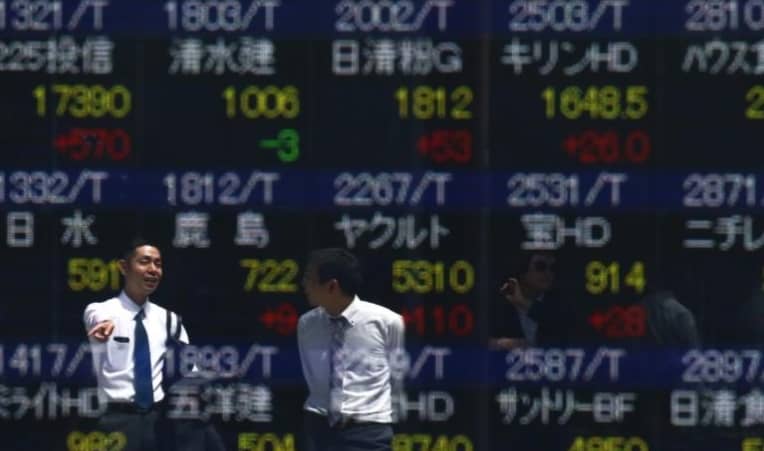
Stock markets slipped on Friday after U.S. President Donald Trump proposed tariffs on more Chinese products, aggravating trade tensions, while the dollar steadied before the closely watched U.S. non-farm payrolls report.
Spreadbetters expected European stocks to open lower, with Britain’s FTSE falling 0.5 percent, Germany’s DAX shedding 0.85 percent and France’s CAC losing 0.75 percent.
The S&P 500 E-mini futures were down 1 percent , pointing to a lower start for Wall Street later in the session.
Trump said late on Thursday that he had instructed U.S. trade officials to consider $100 billion in additional tariffs on China, fuelling the trade dispute between the world’s two economic superpowers.
China’s Ministry of Commerce said it would take new comprehensive measures to safeguard the country’s interests if the United States stuck to its protectionist behavior.
“Trump’s order to consider whether $100 billion of additional tariffs would be appropriate, and recent trade actions and rhetoric in recent weeks, is an example of how battles can turn to wars,” said Dan Ivascyn, group chief investment officer at Pacific Investment Management Co (PIMCO).
“This is another reason investors should be reducing risk.”
Asian stocks declined early on Friday in a knee-jerk reaction to Trump’s latest tariff proposal but regained a measure of calm following Wall Street’s strong performance overnight.
MSCI’s broadest index of Asia-Pacific shares outside Japan was down 0.15 percent.
“Away from the political noise, the reality is that the fundamental backdrop for markets hasn’t changed – global economic growth is broadly synchronized and interest rates are slowly normalizing,” wrote Kerry Craig, Melbourne-based global market strategist at J.P. Morgan Asset Management.
“Equities are more attractively priced now than they were at the start of the year and the earnings outlook has improved. The noise may be distracting but a solid second quarter U.S. earnings season could see investors refocus on fundamentals and the corporate outlook.”
Australian stocks recovered from an earlier drop to rise 0.1 percent. South Korea’s KOSPI lost 0.6 percent. Japan’s Nikkei nudged down 0.1 percent and Hong Kong’s Hang Seng advanced 0.5 percent.
The Dow and the S&P 500 posted gains for a third day in a row on Thursday amid the back-and-forth of the U.S.-China trade dispute, with some investor focus turning to upcoming earnings. [.N]
Beyond the trade turmoil, financial markets are focused on Friday’s U.S. non-farm payrolls report, which could determine the pace of future Federal Reserve interest rate rises and the dollar’s direction.
The U.S. March employment report is expected to show non-farm payroll growth of 193,000 jobs versus 313,000 the prior month, according to the latest Thomson Reuters poll of economists.
Average hourly earnings are expected to have risen 0.2 percent last month after edging up 0.1 percent in February. The gain would lift the annual increase in average hourly earnings to 2.7 percent from 2.6 percent in February.
The dollar was little changed at 107.385 yen after earlier falling to 106.990 on Trump’s latest tariff proposal.
The dollar had risen to a one-month peak of 107.490 yen overnight, bolstered by Wall Street’s bounce on Thursday when the United States appeared to signal a willingness to resolve the trade dispute.
The euro was steady at $1.2243 .
The dollar index against a basket of six major currencies was nearly unchanged at 90.453 . The index has risen 0.4 percent this week.
Treasury debt prices gained and yields declined as investors sought the safety of government bonds.
The 10-year Treasury note yield fell 1.5 basis points to 2.817 percent, pulling back from Thursday’s nine-day high of 2.838 percent.
Crude oil prices fell after Trump’s latest tariff proposal.
U.S. crude slipped 0.7 percent to $63.12 a barrel and Brent was down 0.6 percent at $67.93 a barrel. Oil had gained on Thursday, helped by higher equities and Saudi Arabia’s unexpected hike in crude prices.























